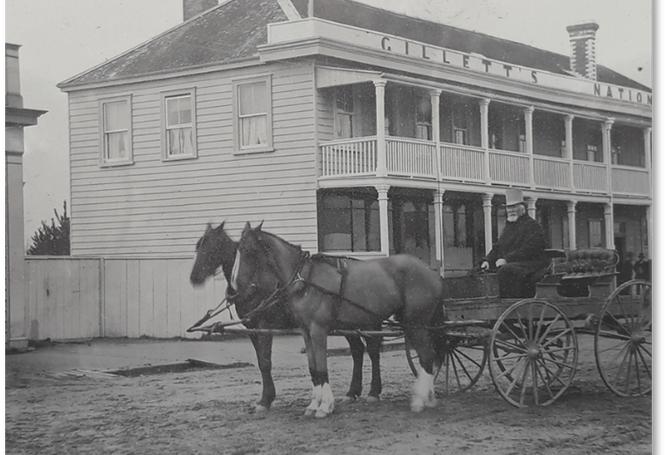William “King” Carter outside the National Hotel, Cambridge in the 1890s CAMBRIDGE MUSEUM 4492
Cambridge’s history spans thriving pre-European communities, land wars, and post-colonial development. Here are some highlights from its past.
Sister cities providing freedom and friendship
In 2000, Cambridge officially gained a twin town - Le Quesnoy (pronounced ler ken-wah), a French town, whose personal connection dates back to World War I. While no soldiers from Cambridge were ladder-climbers in the 1918 Liberation of Le Quesnoy, the town shares a special link through Reverend Clive Mortimer-Jones of St Andrew’s Church, Cambridge.
As a chaplain with the New Zealand Division, Reverend Mortimer-Jones served on the Western Front, identifying fallen soldiers and writing to their grieving families. After returning to Cambridge in 1919, he commemorated their sacrifices with a display in the Church. In 1923, three-panelled stained-glass windows depicting Gallipoli, Ypres, and Le Quesnoy were installed.
In 2019, a striking stainless-steel sculpture by renowned New Zealand artist Fred Graham (Ngāti Koroki Kahukura) was unveiled near the domain. The sculpture features a silver fern symbolising the ladder used during the Liberation, with each leaf representing a soldier who died in the battle.
The Cambridge-Le Quesnoy Friendship Association continues to honour the bond between the two towns.
Te Waikato Sanatorium
Just a short drive from the town centre is the stunning Pukemako Historical Reserve on Sanatorium Hill, which was once the location of Te Waikato Sanatorium. When it opened in 1903 on top of Maungakawa Hill, it was the first open-air sanatorium for tuberculosis sufferers in the country, so demand was high.
The government purchased the Thornton family homestead and built two new wings for patients, an electricity generator, and a freshwater reservoir. Dr. Malcolm Mason, the government’s Chief Health Officer, described its location as offering “magnificent scenery.”
Initially, the sanatorium cared for 30 patients but expanded to 60 with the addition of single-bed chalets designed to open for fresh air. At the peak of its operation, the sanatorium treated 160 patients annually.
Te Waikato Sanatorium closed in 1921, and today, only a small concrete building remains as a reminder of its legacy.
On the road
The Cambridge Caravan Club, formed in 1933, was believed to be the first club of its kind in New Zealand. Members enjoyed regular outings – the first to Matamata Hot Springs - until its recess in 1940 after the outbreak of World War II.
Historic hospitality and tourism evolution
Hotels were among the first buildings in Cambridge, offering public bars as social meeting spots and simple meals, known as “ordinaries,” for workers and settlers. By 1877, with a population of 700, the town featured four bustling hotels.
Tourists arrived by steamboat and later by coach, with William “King” Carter running a popular coach business near the National Hotel. In 1885, when the railway station, travel to Cambridge boomed.
Today, the Waikato Expressway brings visitors to enjoy Cambridge’s scenic walks, cycling routes, boutique shops, museum, and vibrant restaurants.
Rowing at Lake Karāpiro
Lake Karāpiro, an eight kilometre squared lake formed in 1947 after the completion of the Karāpiro Dam, quickly gained recognition as one of New Zealand’s best rowing venues. In 1950, it was the site for the rowing events at the Empire Games, attracting over 20,000 spectators. Race day was February 6, a Monday and not then Waitangi Day. In preparation for race day, bulldozers prepared a natural grandstand, giving spectators a clear view of the course.
In November 1978, the seventh World Championships were held at Lake Karāpiro—a first in the Southern Hemisphere. European rowers were eager to visit the small country that had won gold medals in both the 1968 and 1972 Olympics. The World Rowing Championships returned to Lake Karāpiro in 2010, further cementing its place as a world-class
rowing venue.
Ron Easter of Easter’s “Boot Store”
The location of Health 2000 on Victoria Street was formerly Easter’s Shoe Store, established by Edward (Ted) Easter. From 1917 to 1978, three generations of the Easter family ran the store, with the family name still embedded in the floor tiles as you enter Health 2000.
In 1937, Ron Easter, son of Edward, designed and crafted a special Roman sandal for the boys at St Peter’s School. From this, he gained recognition in the Waikato and beyond for his skill in making boots for people with unusually shaped feet.
Anzac Street
Anzac Street was known as Chapel Street until 1916, when its name was changed to commemorate the ANZAC landing at Gallipoli on 25 April 1915. As a reminder of the days when horses were the main form of transport, one of the last original hitching rails can still be found on the corner of Duke and Anzac Streets.
The historic Post Office
The former Post Office (now the location of Alpino on Victoria Street) was built in 1908. It’s unique for preserving two historical features. The post office captures insignia of both King Edward VII and Edward VIII, who abdicated shortly after becoming King. Also, the few remaining surveyor’s chain marks are still embedded in the footpath outside. The chain marks consist of two brass plaques with arrows placed 22 yards (20.1m) apart, marking the standard length of one ‘chain’ - an Imperial unit of measurement used in surveying.
Arikirua Pā
Beneath our feet lies a hidden history, with layers of soil preserving clues about the people who came before us. Archaeology helps uncover these secrets, piecing together the lives and activities of past generations.
When urban development takes place, archaeologists work closely with mana whenua and listen to what kuia (female elder) and kaumātua (male elder) have to say. When they find evidence of gardens, settlements, trade, and other activities in fields, riversides, and backyards, the sites are documented, and reburied to preserve their stories.
Locally, some areas have been preserved to provide a special connection with the past. One of them stretches along the Te Awa River Ride between the Gaslight Theatre and the velodrome - the remains of Arikirua Pā. Once the home of Ngāti Korokī Kahukura and Ngāti Hauā tupuna, the Arikirua was part of a large-scale trade hub and horticultural site that featured a number of pā, urupa (burial ground) and gardens, growing kumara taro, gourd and tropical yams.
Railway revolution
Along Lake Road, near the entrance to Lakewood, the original railway station’s gates and sign, which the Cambridge Historical Society carefully maintained, can be found. The kissing gates are named for how they ‘kiss’ the fence as they swing and were once used to prevent livestock from escaping the railway yards.
Before the first trains arrived in Cambridge in 1884, the river was the easiest way to travel but the railway transformed communication, speeding up the delivery of goods and making travel easier. Farmers could get cattle to market in hours, students travelled to Hamilton, and tourism flourished.
Before rail, a horse-drawn stagecoach had a top speed of 16 km per hour, but the earliest steam trains could reach speeds of 50 km per hour.
As competition from motor transport increased, fewer people travelled by train. The last timetabled passenger train left Cambridge without fanfare in 1946, however freight trains continued until 1999, but the golden age of rail was over.
Designed to connect the hidden lake with the town, Lakewood began development in 2016. Leaders from mana whenua, Ngāti Korokī Kahukura and Ngāti Hauā, blessed the site, and the first sod of soil was turned, marking the start of the project that was completed
in 2020.

